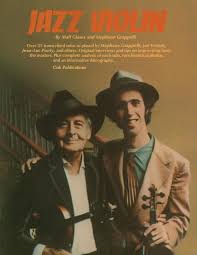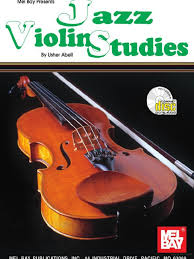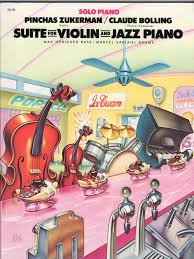Come join us now, and enjoy playing your beloved music and browse through great scores of every level and styles!
Can’t find the songbook you’re looking for? Please, email us at: sheetmusiclibrarypdf@gmail.com We’d like to help you!
Table of Contents
Happy birthday, Jean-Luc Ponty, born on this day in 1942!
Jean-Luc Ponty: The Architect of the Electric Violin in Jazz and Beyond
Jean-Luc Ponty stands as a monumental figure in the landscape of modern music, a pioneer who single-handedly redefined the role of the violin in jazz and rock. Born in the same era as the birth of bebop, he emerged from the conservative world of European classical music to become a central pillar of the jazz fusion movement of the 1970s. His name became synonymous with the electric violin, an instrument he transformed from a novelty into a vehicle of formidable power, complexity, and expressiveness. Ponty is not merely a virtuoso; he is an innovator, a bandleader, and a composer whose expansive, cinematic soundscapes have left an indelible mark on the world of instrumental music. This article delves deep into his biography, his revolutionary style, his technical innovations, and his enduring legacy.

Best Sheet Music download from our Library.
Biography: From the Conservatory to the Fusion Vanguard
Jean-Luc Ponty was born on September 29, 1942, in Avranches, France. His parents were both classical music teachers, and his early life was steeped in formal musical education. He entered the Conservatoire National Supérieur de Musique de Paris at the age of thirteen and graduated two years later with the institution’s highest honor, the Premier Prix (First Prize). He was swiftly recruited by the prestigious Orchestre des Concerts Lamoureux, where he served as a violinist for three years.
However, the sounds of American jazz were calling. As a teenager, he had discovered jazz through the records of Miles Davis, Clifford Brown, and John Coltrane. The improvisational freedom and rhythmic vitality of the genre captivated him. He began to teach himself jazz violin, an instrument with few established role models in the bebop and post-bop idioms. His first major break came in 1964 when he was invited to perform at the Nice Jazz Festival, which led to his first recording as a leader, “Jazz Long Playing.”
The late 1960s were a period of rapid ascent and experimentation. He gained significant recognition through his work with composer and bandleader Frank Zappa, who was an early admirer of Ponty’s potential. Zappa not only featured Ponty on his albums “Hot Rats” (1969) and “Over-Nite Sensation” (1973) but, crucially, also wrote compositions specifically for him, such as “Music for Electric Violin and Low-Budget Orchestra.” This relationship exposed Ponty to a world of complex time signatures, orchestral rock, and a “anything is possible” attitude that would deeply influence his own work.

Please, subscribe to our Library.
If you are already a subscriber, please, check our NEW SCORES’ page every month for new sheet music. THANK YOU!
Simultaneously, he was making waves in the straight-ahead jazz world. In 1969, he moved to the United States and played a pivotal role on one of the defining albums of the early fusion movement: “The Atomic Mr. Basie” (now known as “Basie on the Beatles”), arranged by Gary McFarland, and more importantly, John Coltrane’s drummer, Elvin Jones. He joined the band of drummer-composer-composer for a time, further solidifying his jazz credentials.
The turning point in his career came in the mid-1970s when he became a key member of the Mahavishnu Orchestra, led by guitar virtuoso John McLaughlin. Though his tenure was brief, appearing only on the album “Apocalypse” (1974) with the London Symphony Orchestra, the association placed him at the epicenter of the fusion universe. It was here that he fully embraced the amplified, effects-laden sound that would become his trademark.

Browse in the Library:
Or browse in the categories menus & download the Library Catalog PDF:
In 1975, Ponty signed with Atlantic Records and embarked on a solo career that would define an era of jazz fusion. From 1975 to 1985, he released a string of classic albums—“Upon the Wings of Music,” “Aurora,” “Imaginary Voyage,” “Enigmatic Ocean,” and “Cosmic Messenger”—that were both critically acclaimed and commercially successful. These records established his signature sound: a blend of high-energy jazz-rock, funky rhythms, complex compositions, and ethereal, melodic themes. He became a major concert draw, headlining arenas and becoming one of the best-selling instrumental artists of the decade.
The 1980s and beyond saw Ponty continuing to evolve. He formed a short-lived but acclaimed supergroup, the “Anderson Ponty Band” with Yes vocalist Jon Anderson in the 2015, and collaborated with other fusion giants like guitarist Al Di Meola and bassist Stanley Clarke. Despite shifts in musical trends, he never stopped touring or recording, maintaining a loyal global audience and continuing to explore new musical territories, including a return to his acoustic roots and world music influences. His legacy is that of a tireless explorer who permanently expanded the vocabulary of his instrument.
Music Style and Improvisational Licks: The Electric Violin Revolution
Jean-Luc Ponty’s style is a sophisticated synthesis of multiple disciplines, creating a unique and instantly recognizable voice.
The Fusion of Styles:
- Classical Precision: His classical training is the foundation. It endowed him with flawless intonation, a powerful bowing technique, and the ability to execute incredibly complex passages with seeming ease. His compositions often feature through-composed, orchestral-style sections that would be unthinkable without this background.
- Bebop Language: His early jazz influences are rooted in bebop. His improvisations are built on the harmonic sophistication and scalar runs of players like Charlie Parker and John Coltrane, which he adapted to the violin. He doesn’t just play “violin jazz”; he plays jazz on the violin.
- Rock Energy and Funk Rhythms: Ponty fully embraced the power of rock. His music is driven by electric bass (often the fretless bass, which complemented his violin’s glissandi), powerful drumming, and, crucially, the rhythmic comping of synthesizers and electric pianos. He incorporated funk rhythms, giving his music a danceable, visceral pulse.
- Electronic Exploration: Ponty was a pioneer in using electronic effects. He was one of the first violinists to use a wah-wah pedal extensively, creating vocal, crying tones. He also used phasers, flangers, and delay to create a spacious, otherworldly sound, particularly on his melodic themes.
Improvisational Licks and Technical Innovations:
Ponty’s improvisational style is characterized by blistering speed, harmonic intelligence, and a unique tonal palette.
- The “Violin-Synth” Voice: Ponty’s most significant technical contribution was his adoption and mastery of the 5-string electric violin (adding a low C string) and later, the Baritone violin (tuned an octave below a standard violin). More importantly, he was an early adopter of the violin synthesizer, notably the Electro-Harmonix V-1. This allowed him to trigger synthesizers directly from his violin, enabling him to play brass-like stabs, string orchestra pads, and futuristic leads, often layering them over his acoustic violin sound. This made his solo performances incredibly dense and orchestral.
- Pentatonic and Modal Sequencing: A hallmark of his “fusion era” solos is the use of rapid, perfectly even sequences of pentatonic or modal scales. He would run through complex patterns across the strings with a machine-gun-like precision, creating a thrilling, virtuosic effect. This is evident on tracks like “The Struggle of the Turtle to the Sea” from Enigmatic Ocean.
- Bebop Lines Adapted for Violin: He seamlessly translates the angular, chromatic lines of bebop onto the fretless fingerboard of the violin. His ability to navigate complex chord changes with fluid, horn-like phrasing broke the violin free from its “sweet” stereotype and established it as a frontline instrument for modern jazz.
- Use of Double-Stops and Chords: Unlike many violinists who primarily play single-note lines, Ponty frequently incorporates double-stops (two notes at once) and chords into his solos, adding harmonic weight and textural variety. His classical technique allows him to do this cleanly even at high speeds.
- Expressive Bowing and Glissandi: While known for his precision, Ponty also uses wide, expressive vibrato and glissandi (slides between notes) to add a vocal, emotional quality to his slower melodies, creating a beautiful contrast to his high-velocity passages.
Cooperation with Other Artists: A Fusion Catalyst
Ponty’s career is marked by collaborations with the most innovative figures in jazz and rock.
- Frank Zappa: This was a foundational relationship. Zappa provided Ponty with a platform to experiment with complex, through-composed music that blurred the lines between jazz, rock, and classical. Ponty’s work with Zappa gave him the confidence to pursue his own ambitious compositional ideas.
- The Mahavishnu Orchestra: Joining John McLaughlin’s group, even briefly, certified Ponty’s status as a fusion A-lister. It immersed him in a high-energy, spiritually-charged musical environment and exposed his playing to a massive, dedicated audience.
- The Mothers of Invention: His appearances on Zappa’s albums often overlapped with this legendary band, further integrating him into the progressive rock scene.
- Jon Anderson (Yes): The Anderson Ponty Band project late in his career united the ethereal, prog-rock vocals of Anderson with Ponty’s instrumental landscapes, showing his enduring ability to adapt his sound to new contexts.
- Supergroups with Clarke and Di Meola: The “The Rite of Strings” trio with Al Di Meola and Stanley Clarke (1995) was a celebrated acoustic project that highlighted the sheer virtuosity and deep jazz roots of all three musicians, proving Ponty’s mastery was not dependent on electronics.
Chord Progressions and Music Harmony: Cinematic and Complex
Ponty’s harmonic language is a direct reflection of his diverse influences.
- Modal Foundations: Much of his music is built on modal frameworks, similar to Miles Davis and John Coltrane. Tracks like “Mirage” from Enigmatic Ocean are based on static modal vamps (Dorian mode is a favorite), allowing for extended, hypnotic solos.
- Jazz-Rock Complexity: He frequently employs sophisticated jazz harmony—extended chords (9ths, 11ths, 13ths), altered dominants, and chord substitutions—but sets them against a driving rock backbeat. A composition like “New Country” from Enigmatic Ocean features rapid-fire chord changes that would be at home in a bebop tune, but are played with the intensity of rock.
- Orchestral and Impressionistic Textures: His classical background shines through in his use of rich, orchestral harmonies. He often writes for his band as if it were a small orchestra, with synth pads creating string-like beds over which the violin and other instruments solo. His themes often have a lyrical, almost cinematic quality, reminiscent of film scores.
- Odd-Meter Compositions: Influenced by Zappa and Eastern European folk music, Ponty is a master of composing in odd time signatures. Pieces like “Egocentric Molecules” (from Imaginary Voyage) are in 7/8, and “The Struggle of the Turtle to the Sea” (from Enigmatic Ocean) moves through various complex meters, yet he always manages to make them feel organic and grooving.
Influences and Legacy: The Pathfinder
Influences:
- Classical Composers: Claude Debussy, Igor Stravinsky, and Béla Bartók for their harmony and orchestration.
- Jazz Giants: John Coltrane (for modal exploration and intensity), Miles Davis (for his cool tone and modal concepts), and Svend Asmussen (an early jazz violinist he admired).
- The Jazz Violin Tradition: While he moved far beyond it, he acknowledged the influence of Stuff Smith and Stéphane Grappelli, particularly in his early career.
Legacy:
Jean-Luc Ponty’s legacy is profound and multi-faceted:
- The Electric Violin Pioneer: He is the undisputed father of the modern electric violin movement. He demonstrated that the violin could be as powerful, expressive, and technologically integrated as the electric guitar.
- A Bridge Between Worlds: He successfully built a bridge between the conservatory and the jazz club, between the symphony hall and the rock arena. He proved that high-level instrumental virtuosity could achieve mass appeal.
- Inspiration for Generations: Virtually every violinist who has picked up an electric instrument in the last 50 years owes a debt to Ponty. His influence is clear in artists like Didier Lockwood, Michal Urbaniak, and a new generation including fiddler Mark O’Connor and players in the jam band and progressive metal scenes.
- A Composer of Substance: His body of work stands as a significant contribution to the repertoire of jazz fusion, filled with compositions that are both intellectually stimulating and emotionally resonant.
Works, Filmography, and Discography
Most Known Compositions and Performances:
- “New Country” (Enigmatic Ocean)
- “The Struggle of the Turtle to the Sea” (Enigmatic Ocean)
- “Mirage” (Enigmatic Ocean)
- “Wandering on the Milky Way” (Cosmic Messenger)
- “Egocentric Molecules” (Imaginary Voyage)
- “Upon the Wings of Music” (Upon the Wings of Music)
- “Aurora” (Aurora, Part II)
- “Bowing-Bowing” (Individual Choice)
Filmography:
While not a major film actor, his music has been featured in films and he has appeared in documentaries:
- “King Kong: The Life and Film of John Guillermin” (Documentary)
- His music is featured in the soundtrack for “The French Connection” (though not on the official released soundtrack album).
- Numerous concert DVDs and performances captured for television, such as “Jean-Luc Ponty Live at Montreux 1994.”
Selective Discography (Solo & Key Collaborations):
- Jazz Long Playing (1964)
- Sunday Walk (1967)
- Electric Connection (1969)
- Upon the Wings of Music (1975)
- Aurora (1976)
- Imaginary Voyage (1976)
- Enigmatic Ocean (1977) – Often considered his masterpiece.
- Cosmic Messenger (1978)
- A Taste for Passion (1979)
- Civilized Evil (1980)
- Individual Choice (1983)
- Open Mind (1984)
- The Gift of Time (1987)
- The Rite of Strings (1995) – with Al Di Meola and Stanley Clarke.
- The Atacama Experience (2007)
- The Anderson Ponty Band – Better Late Than Never (2015)
In conclusion, Jean-Luc Ponty is a true visionary. He took an instrument confined by centuries of tradition and propelled it into the future, equipping it with electricity, effects, and a new rhythmic and harmonic language. He is not just a great violinist; he is a pivotal figure in the history of jazz and fusion, a composer of immense talent, and the man who taught the world that the violin could truly rock.
Jean-Luc Ponty: Imaginary Voyage
In 1976, Jean-Luc Ponty’s variations on the Mahavishnu Orchestra’s songs and arrangements were still fresh and imaginative, presented in a distinctively different, more lyrical and more controlled framework. For this album “Imaginary Voyage.
To kick off the album, a fresh piece titled “New Country,” that invites the listener to listen to and participate in a lively jazz-rock party; the second track, entitled “The Gardens of Babylon” is a brilliant melody that highlights one of the great qualities of the Parisian violinist: his ability to create unforgettable atmospheres and sounds. On the second side of the vinyl there is a single track, the one that gives the album its title, divided, like a suite, into four parts and each of them perfectly linked with the other three. Quite simply, a fantastic album.
